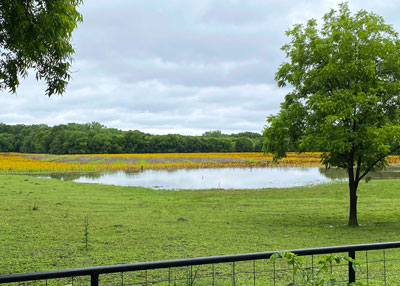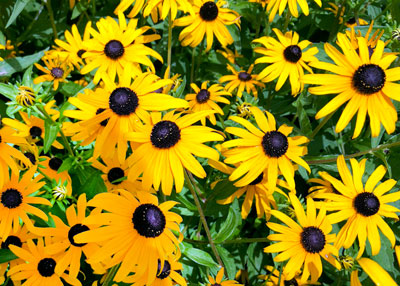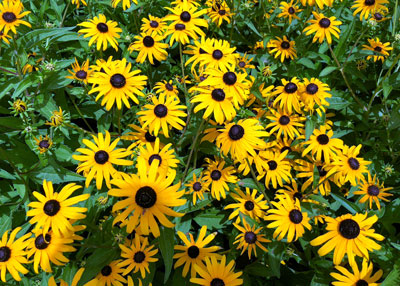Gorgeous Gloriosas
Native Texans are familiar with Blackeyed Susans as wildflowers. Odds are there are some in full bloom down the highway from your house right now.

Well, dress ‘em up in a new suit of leaves and give them a few touch-ups and improvements and you have a fabulous perennial garden flower called ‘Goldsturm’ gloriosa daisy.
It’s a Rudbeckia, as are all the gloriosas. I’d tried a lot of the others back 30 or 35 years ago, and they all seemed to do well for a year or two, but then they were gone. Then I saw this one growing in a planting in the Dallas Park Department. I asked what it was and that’s how I met it. I’ve been growing it pretty much ever since.
Goldsturm is truly perennial. The mother plants survive from one year to the next, but they also surround themselves abundantly with little offshoots that can easily enough be dug and shared with other beds in your landscape or other gardeners on your block.

The plants grow to be 15 to 16 inches tall and wide while in bloom. Flowers are some 2 inches across. While there are rudbeckias with larger flowers as well as some that have banded colors, these are superior in terms of their staying power.
As with all gloriosas, Goldsturm grows best in full or nearly full sun. Plant it into well-prepared garden soil to which you’ve added generous amounts of organic matter and expanded shale. It’s best if the finished grade of the bed is a couple of inches above the surrounding terrain to ensure good drainage.

Fertilize gloriosa daisies with a high-nitrogen, lawn-type plant food every three or four weeks, and keep your plants moist at all times. Prune off spent blooms to keep the bed looking tidy.
At the end of the season, when frost has killed the plants back to the ground, trim the old stems back to within an inch of the soil. I don’t believe I’ve ever seen any insect or disease bother my gloriosa daisies. Yet another reason to love them.
And I do!
